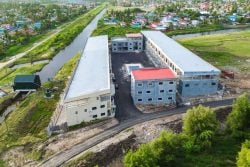Dear Editor,
It is important to learn that the revenues generated from the Low Carbon Development Strategy (LCDS) are being directed to Indigenous communities in Guyana. From observation, these funds are primarily allocated towards physical infrastructure and transportation: such as buildings, sports facilities, buses tractors etc. While these investments are beneficial, they do not adequately prepare the communities for long-term sustainability and indigenous ways of development.
The current approach requires accountability for the spending of funds from ad-hoc planning, but there is a need for village leaders to have the autonomy to allocate resources for initiatives beyond physical structures and transportation etc. This may include investing in education by establishing village libraries to do research, opening village shops, and investing in Starlink’s fast-speed internet to sell to those who can afford the monthly fees, which can generate employment opportunities for young people.
In addition to prioritizing sustainable development, communities must consider investing in banking and establishing cooperatives to ensure the sustainable use of funds. Initiatives like rural cooperatives can contribute to rural business, ecotourism, green development and agriculture. Perhaps the Ministry of Amerindian Affairs can assist in facilitating such an initiative by sourcing the experts in Cooperatives and Rural banking along with local knowledge to establish such creative ways of dealing with carbon money in Amerindian communities.
When this is achieved the initiative can assist and encourage Indigenous communities to utilize the Carbon revenues not only for immediate spending but also for saving and investing in ways that are beneficial and sustainable for future generations.
Yours sincerely,
Medino Abraham





